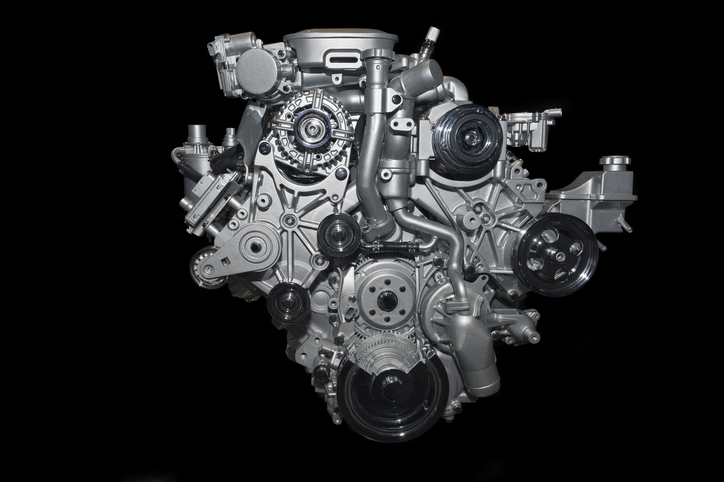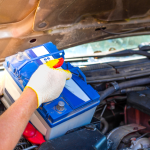Engines have a unique way of speaking to us. Whether it’s the smooth purr of a luxury sedan or the deep growl of a sports car, engine noises are more than just sounds—they are a reflection of the machine’s internal workings. Each engine noise tells a story of power, performance, and mechanical precision. But why do engines make different noises? To truly understand engine noises, we need to dive deep into the mechanics behind them and the various factors that influence these distinct sounds.
What Causes Engine Noises?
Engine noises result from a combination of various factors, all working together to produce the symphony of sound that accompanies a running engine. These factors include the engine’s size, type, configuration, and even the materials used in its construction. Engine noises are shaped by these elements, making them unique to each vehicle.
The core component responsible for engine noises is the combustion process. As fuel ignites within the engine, it creates small explosions that generate power. This combustion process, combined with the movement of pistons, valves, and exhaust gases, generates the different sounds we associate with engines. A larger engine, for example, typically produces a deeper, more resonant noise due to the volume of air and fuel involved in the combustion process. Conversely, smaller engines tend to create higher-pitched engine noises.
Engine Design and Configuration
Engine design plays a crucial role in shaping engine noises. The way an engine is configured affects the flow of air, fuel, and exhaust, all of which influence the sound it makes. For example, an inline-four engine will have a distinctly different sound than a V8 engine due to the arrangement of its cylinders.
An inline-four engine, commonly found in many compact cars, produces a smoother and more even sound. Its cylinder configuration creates a balanced rhythm, resulting in engine noises that are often described as “humming” or “purring.” On the other hand, a V8 engine, which has more cylinders and a different firing order, produces deeper and more aggressive engine noises. The V8’s distinct “growl” is a favorite among performance car enthusiasts.
The Role of Exhaust Systems in Engine Noises
One of the most important contributors to engine noises is the exhaust system. The exhaust system carries gases away from the engine, and the way these gases are handled can dramatically alter the sound of the engine. High-performance exhaust systems are often designed to amplify engine noises, giving vehicles a sportier and more aggressive sound. Conversely, luxury cars often have quieter exhaust systems to minimize engine noises, promoting a more serene driving experience.
Mufflers are a key component of the exhaust system that help to control engine noises. They work by disrupting the flow of exhaust gases, reducing the pressure and volume of sound waves exiting the engine. Depending on the design of the muffler, it can either enhance or reduce engine noises. For example, a straight-through muffler is commonly used in high-performance vehicles to allow louder engine noises, while a baffled muffler is designed to reduce sound for a quieter ride.
Turbochargers and Superchargers: How They Impact Engine Noises
Turbochargers and superchargers are often added to engines to boost performance, but they also significantly affect engine noises. A turbocharged engine creates a unique whistling sound, often referred to as “turbo whistle,” which results from the high-pressure air being forced into the engine. This distinctive sound is a hallmark of turbocharged engines and is a sought-after characteristic for some automotive enthusiasts.
Superchargers, on the other hand, create a different type of noise. Instead of the whistling associated with turbos, supercharged engines often produce a whining noise due to the belt-driven compressor that forces air into the engine. These engine noises are commonly associated with high-performance vehicles and can make a car sound more powerful and aggressive.
Engine Materials and How They Influence Sound
The materials used to construct an engine can also affect the types of engine noises it produces. Engines made from lightweight materials, such as aluminum, tend to produce more high-pitched engine noises. This is because aluminum conducts sound more efficiently than heavier materials like cast iron. As a result, you may notice that modern, lightweight engines produce sharper, more metallic sounds compared to older, heavier engines.
Additionally, soundproofing materials used in the vehicle’s construction can either dampen or amplify noises. Luxury vehicles often have extensive soundproofing to minimize the amount of noise entering the cabin, while sports cars may intentionally allow more noises to be heard, enhancing the driving experience.
Different Engine Types and Their Unique Sounds
Every type of engine has a distinctive sound signature. For instance, diesel engines tend to produce a deeper, more rumbling noise compared to gasoline engines. This is due to the higher compression ratio and different combustion process of diesel engines, which results in more pronounced engine noises.
Two-stroke engines, often found in motorcycles or smaller vehicles, produce a high-pitched, buzzing noise. This is because two-stroke engines fire once every revolution, creating more frequent noises compared to four-stroke engines, which fire once every two revolutions.
Rotary engines, though less common, have their own unique sound profile. These engines create smooth, high-pitched noises because they don’t rely on pistons. Instead, they use a rotating triangular rotor to generate power, which results in a distinct whirring sound.
Engine Noises and Performance
One of the most interesting aspects of engine noises is how they can be used to gauge an engine’s performance. Experienced drivers can often tell whether an engine is running smoothly or experiencing problems just by listening to the noises. For example, a knocking or pinging sound can indicate issues with the fuel mixture or timing, while a hissing noise may suggest a problem with the exhaust or a vacuum leak.
In high-performance vehicles, engine noises are often engineered to provide auditory feedback to the driver. The roar of the engine as you accelerate can be an exhilarating experience, and the sound itself becomes part of the vehicle’s performance. Automakers often fine-tune noises to enhance the driving experience, making sure that the sound matches the car’s power and speed.
How Noises Have Evolved Over Time
Engine noises have evolved significantly over time as technology has advanced. Early engines were much louder and more abrasive, with minimal sound dampening or exhaust management. As engines became more refined, engineers began to focus on improving not just performance but also the quality of engine noises.
Modern engines are often equipped with systems that allow drivers to control the amount of engine noise they hear. Some vehicles have active sound management systems that can enhance or mute engine noises based on the driving mode. For example, in “Sport” mode, a car may amplify noises to make the driving experience more exciting, while in “Eco” mode, noises are minimized for a quieter, more efficient ride.
Conclusion
Engine noises are a fascinating aspect of automotive engineering, offering insight into the inner workings and performance of a vehicle. From the deep growl of a V8 to the high-pitched hum of a turbocharged four-cylinder, each engine produces its own unique sound signature. Factors such as engine design, exhaust systems, and even the materials used all contribute to these distinctive noises. Understanding engine noises not only helps drivers appreciate the complexity of their vehicles but also provides valuable clues about engine performance and health. Whether you’re a car enthusiast or just curious about the sounds your engine makes, there’s no denying the power and significance behind every roar, hum, and purr.











